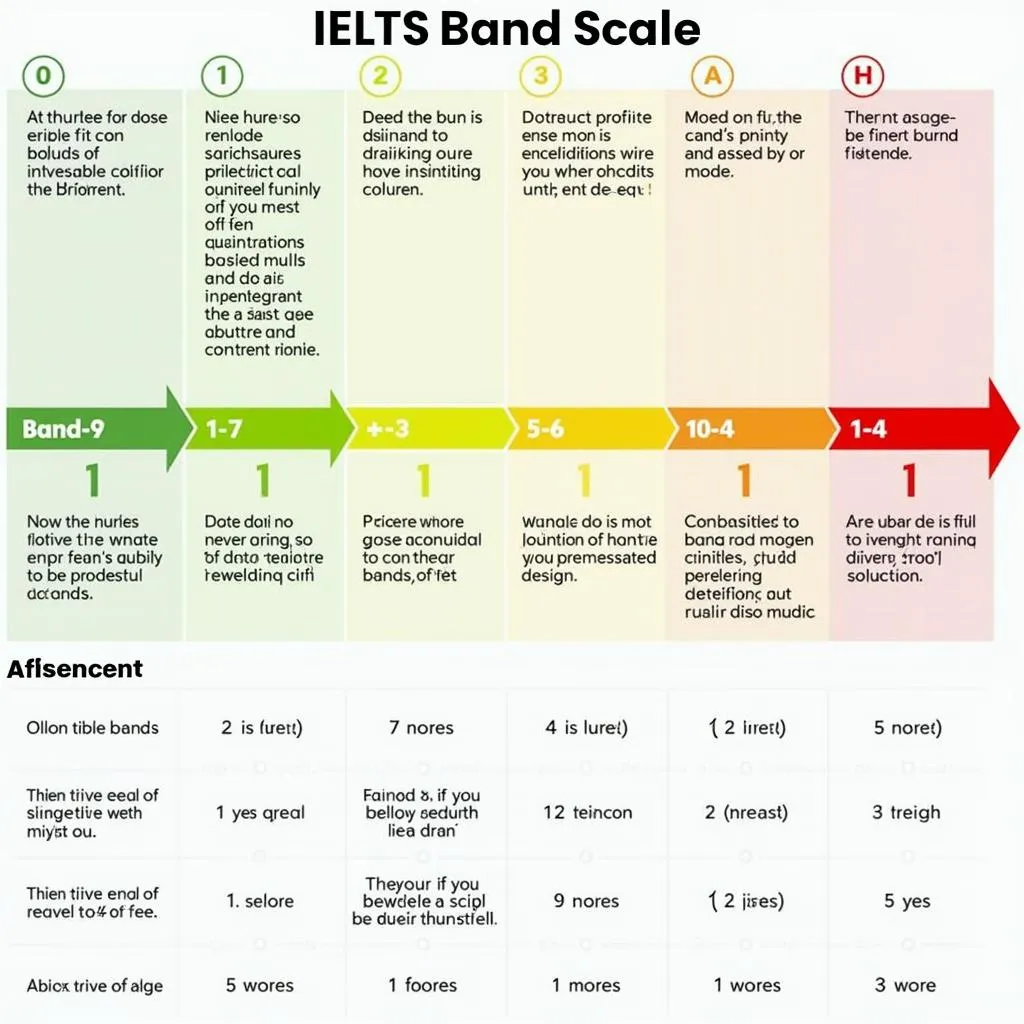Understanding IELTS Band Descriptors
IELTS band descriptors are crucial tools used by examiners to assess and score test-takers’ performance across the four key skills: Listening, Reading, Writing, and Speaking. These descriptors provide a detailed breakdown of the criteria used to determine a candidate’s proficiency level on a scale from 0 to 9.
Why Are Band Descriptors Important?
Band descriptors serve as a roadmap for both examiners and test-takers. For examiners, they ensure consistent and fair assessment across all candidates. For test-takers, understanding these descriptors is essential for:
- Setting realistic goals
- Identifying areas for improvement
- Understanding what examiners are looking for
- Self-assessment during preparation

Breaking Down the Band Descriptors
Listening and Reading
For Listening and Reading tests, band scores are determined by the number of correct answers. The raw score is then converted to the IELTS 9-band scale. Key aspects include:
- Band 9: 39-40 (Listening) / 39-40 (Academic Reading) / 40 (General Training Reading)
- Band 8: 35-38 (Listening) / 35-38 (Academic Reading) / 38-39 (General Training Reading)
- Band 7: 30-34 (Listening) / 30-34 (Academic Reading) / 34-37 (General Training Reading)
Writing
Writing is assessed based on four criteria:
- Task Achievement (Task 1) / Task Response (Task 2)
- Coherence and Cohesion
- Lexical Resource
- Grammatical Range and Accuracy
Each criterion is scored individually, and then an overall band score is calculated.
Speaking
Speaking is evaluated on four criteria:
- Fluency and Coherence
- Lexical Resource
- Grammatical Range and Accuracy
- Pronunciation
Examiners use detailed descriptors for each band to assess a candidate’s performance in these areas.
Detailed Look at Band Descriptors
Band 9 (Expert User)
- Listening/Reading: Near-perfect understanding and interpretation of complex texts
- Writing: Fully developed responses with skillful use of language
- Speaking: Effortless communication with native-like fluency
Band 8 (Very Good User)
- Listening/Reading: Accurate comprehension with only occasional lapses
- Writing: Well-developed, clear responses with wide range of language
- Speaking: Fluent with only rare repetition or self-correction
Band 7 (Good User)
- Listening/Reading: Good understanding with some missed implications
- Writing: Clear ideas with good use of language, despite some errors
- Speaking: Speaks at length without noticeable effort
Band 6 (Competent User)
- Listening/Reading: General understanding but may miss some details
- Writing: Addresses task but with some inadequacies in organization or language
- Speaking: Can speak at length with some repetition and self-correction
Band 5 (Modest User)
- Listening/Reading: Partial understanding of main ideas
- Writing: Addresses task partially with limited development of ideas
- Speaking: Can talk about familiar topics but with noticeable pauses
How to Use Band Descriptors for Improvement
- Self-assessment: Regularly compare your performance to the descriptors
- Targeted practice: Focus on areas where you fall short of your target band
- Feedback analysis: Use the descriptors to understand feedback from practice tests
- Goal setting: Set realistic goals based on your current level and the descriptors
Common Pitfalls in Understanding Band Descriptors
- Overestimating current level: Be honest in your self-assessment
- Focusing only on higher bands: Understand the progression through all levels
- Neglecting specific criteria: Pay attention to all aspects of each skill
- Misinterpreting language: Familiarize yourself with the terminology used
Next Steps
- Take a practice test and score yourself using the band descriptors
- Identify your weakest areas based on the descriptors
- Create a study plan focusing on improving these areas
- Regularly reassess your progress using the descriptors as a guide
- Consider seeking feedback from a qualified IELTS instructor for more accurate assessment
Understanding IELTS band descriptors is a crucial step in preparing for the test. By familiarizing yourself with these criteria, you can more effectively target your study efforts and set realistic goals. Remember, improvement takes time and consistent practice. Use the band descriptors as a tool to guide your preparation and measure your progress on your journey to achieving your desired IELTS score.